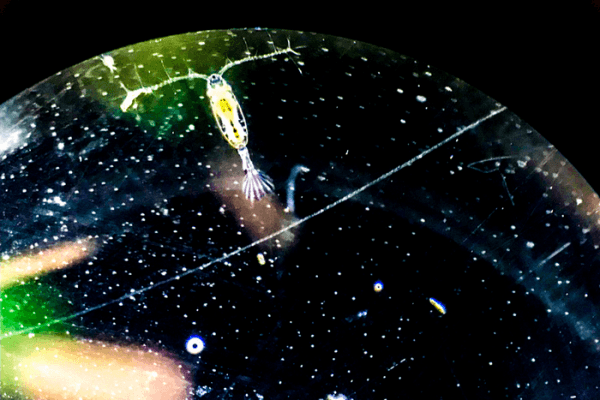Suppose that we could watch twenty generations of whales or sharks adapting to climate change—measuring how they evolve and how their biology changes as temperatures and carbon dioxide levels rise. That could tell us a lot about how resilient life in the oceans might be to a warmer world. But it would also take hundreds of years—not very useful to scientists or policymakers trying to understand our warming world today.
Instead, consider the life of the copepod Acartia tonsa, a tiny and humble sea creature near the bottom of the food web. It reproduces, matures, and creates a new generation in about twenty days. Twenty copepod generations pass in about one year.
A team of six scientists, led by University of Vermont biologist Melissa Pespeni and postdoctoral scientist Reid Brennan, did just that: in a first-of-its kind laboratory experiment, they exposed thousands of copepods to the high temperatures and high carbon dioxide levels that are predicted for the future of the oceans. And watched as twenty generations passed. Then they took some of the copepods and returned them to the baseline conditions—the temperature and CO2 levels that the first generation started in, which are like ocean conditions today. And then they kept watching as three more generations passed.
Read more at: University of Vermont
Copepods are small crustaceans found in nearly every freshwater and marine habitat—and they may be the most abundant animals in the ocean. UVM scientists studied one species of them--Acartia tonsa, shown here--to test how they would respond to climate change. (Photo Credit: UVM/Pespeni Lab)


